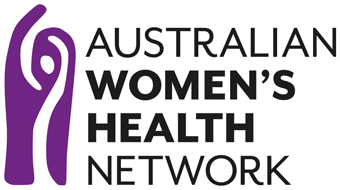ERA National Plan on Gender Equality – Feminist Foreign Policy and Official Development Assistance
Equality Rights Alliance Women’s Health 2019
Gender inequality persists in every country and shapes opportunities and outcomes for women, men and people of all gender identities. Gender is a crucial factor in shaping the economies, governance and stability of nations around the world (Ban Ki-Moon, 2014), and as such is critical to Australia’s national interests. Further, considering how gender intersects with other factors such as age, disability, rural/urban location and socio-cultural background is essential to understanding the broader factors shaping economic, social and political development.
ERA National Plan on Gender Equality – Education and Training
Equality Rights Alliance Women’s Health 2019
Although Australia was once a leader internationally in gendered education policy, there are no current overarching national policies that focus on gender in education in Australia. Policies have become selective, such as the current focus on STEM, without deeper consideration of longer-term implications. The lack of interest in education policies for women and girls impacts not only on policy per se but also impacts negatively on research, including research funding.
ERA National Plan on Gender Equality – Economic Wellbeing
Equality Rights Alliance Women’s Health 2019
This is a position paper recognising, valuing and redistributing unpaid work
Housing Outcomes after domestic and family violence
Australian Housing and Urban Research Institute April 2019
This study examined the impact of housing and other support services on safety and wellbeing for families experiencing domestic and family violence. The study also reviewed the legislative framework across Australia, together with interviews with key stakeholders and users.
The Australian Women and Digital Health Project
Debra Lupton News and Media Research Centre January 2019
A range of digital technologies are available to people to find, share and generate health-related information. Few studies have directed attention specifically to how women are using these technologies from the diverse array available to them.
For women with chronic health conditions and those caring for infants and young children, in particular, online forums and social media groups were often used as a form of lay creation and sharing of knowledge. The key benefits of online peer sources were the opportunity to share experiences as well as ask advice and find support from other people experiencing similar illnesses or life events. The participants particularly valued being able to access a more personal form of information that provided insights from others’ experiences.
Out of the shadows – domestic and family violence: a leading cause of homelessness in Australia
Publisher: Mission Australia March 2019
Status – CURRENT
Domestic and family violence is a major driver of homelessness in Australia, particularly for women and their children. This paper focuses on the intersections between these issues, drawing together the research, stories of victim-survivors and service provider wisdom to recommend ways forward.
The health and social costs of women sleeping rough in Australia’s cities
Publisher: Centre for Social Impact University of WA
Status – CURRENT
The first detailed picture using non-administrative data of the physical and mental health outcomes and broader life experiences of women sleeping rough in Australia. Women sleeping rough experience elevated rates of physical and mental health conditions, substance abuse issues, domestic violence and interactions with the justice system relative to both the general population and women experiencing other forms of homelessness (such as couch surfing or supported accommodation).
Teenage Mothers in Australia 2015
Publisher: AIHW 2015
Status – CURRENT
Teenage mothers in Australia: This report presents key statistics and trends for teenage mothers and their babies in Australia. Teenage mothers and their babies are more likely to experience broader disadvantage, have antenatal risk factors and have poorer maternal and baby outcomes during and after birth, than older mothers and their babies.

